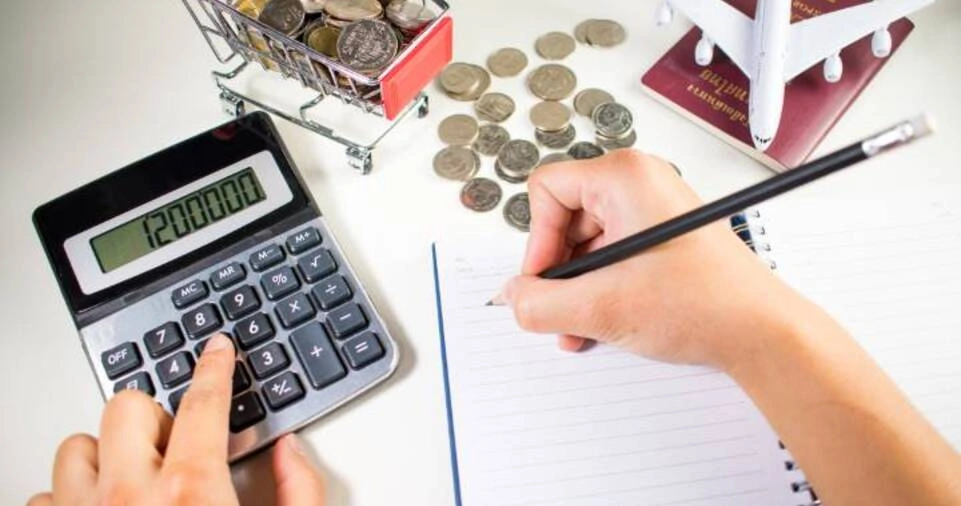Managing personal finances is essential for financial stability and long-term success.
A well-structured budget allows individuals to track their income, control spending, and work towards financial goals such as saving for a house, paying off debt, or building an emergency fund.
However, creating a budget is only half the battle—sticking to it requires discipline and strategic planning.
A personal budget helps prevent overspending, reduces financial stress, and ensures that money is allocated to essential expenses while allowing for savings and investments.
A strong financial plan can also provide peace of mind, helping individuals manage emergencies and unexpected expenses without falling into debt.
Understanding how to create and maintain a budget can help build long-term financial security and a comfortable lifestyle.
This guide will walk you through the steps to create an effective budget, provide strategies for maintaining it, and offer tips to stay financially disciplined.
Whether you are new to budgeting or looking to refine your existing financial plan, the following steps will help you take full control of your financial future.
Step 1: Assess Your Financial Situation
Calculate Your Income
Before creating a budget, determine how much money you earn each month.
Consider:
- Salary/Wages – After-tax income from your job
- Side Hustles – Freelancing, gig work, or passive income
- Investments – Dividends, rental income, or other earnings
- Government Benefits – Any additional income sources like social security or subsidies
- Unexpected Income – Bonuses, gifts, or financial windfalls
Knowing your total income ensures that your budget is based on realistic figures.
Having a clear understanding of income sources also helps in adjusting for fluctuations, especially if you have irregular earnings.
Track Your Expenses
For one month, track every expense to understand your spending habits.
Categorize expenses into:
- Fixed Expenses – Rent, mortgage, insurance, loan payments, property taxes
- Variable Expenses – Groceries, utilities, entertainment, subscriptions, fuel costs
- Discretionary Expenses – Dining out, shopping, luxury purchases, hobbies
- Savings and Investments – Retirement contributions, emergency fund deposits, stock or crypto investments
- Debt Repayments – Student loans, credit card bills, car loans, medical debts
Use budgeting apps like Mint, YNAB, or a simple spreadsheet to record transactions.
Keeping receipts or reviewing bank statements can also help provide insights into spending patterns.
Understanding where your money is going is the first step toward financial awareness.
If you often find yourself short on cash before the month ends, your expenses might need adjustment.
Step 2: Set Financial Goals

Define both short-term and long-term financial goals to create motivation and purpose for budgeting.
Short-Term Goals (0-1 Year)
- Building an emergency fund to cover at least 3-6 months of expenses
- Paying off small debts to reduce financial burden
- Saving for a vacation, new gadgets, or major household purchases
- Reducing unnecessary spending to build better financial habits
Long-Term Goals (1+ Years)
- Buying a home or saving for a down payment
- Paying off student loans, mortgages, or other significant debts
- Retirement planning and increasing contributions to retirement accounts
- Building a diversified investment portfolio to generate passive income
Clearly defined goals help prioritize spending and savings.
Writing down financial goals and breaking them into achievable steps can increase motivation and keep you focused on financial success.
Step 3: Choose a Budgeting Method
The 50/30/20 Rule
A simple yet effective approach:
- 50% Needs – Rent, utilities, food, transportation, healthcare
- 30% Wants – Entertainment, dining out, hobbies, vacations
- 20% Savings & Debt Repayment – Emergency funds, investments, loan repayments
This approach ensures a balance between necessary expenses and financial growth.
Zero-Based Budgeting
Assign every dollar of your income to a specific category, ensuring that income – expenses = $0 by the end of the month. This method provides strict financial control and eliminates wasted money.
Envelope System
Use cash for different categories (e.g., groceries, dining out).
When an envelope is empty, no more spending is allowed in that category. This helps develop financial discipline and prevent unnecessary expenses.
Choose the method that best fits your lifestyle and financial goals. Combining multiple strategies can also be effective.
Step 4: Cut Unnecessary Expenses

Analyze spending habits and identify areas where costs can be reduced.
Consider:
- Canceling unused subscriptions and memberships
- Cooking at home instead of dining out frequently
- Using public transportation instead of driving to save on gas
- Buying second-hand items instead of new ones
- Switching to a more affordable phone plan or internet service
Small changes can lead to significant savings over time.
The key is to be mindful of expenses that do not add much value to your life and redirect those funds toward meaningful financial goals.
Step 5: Automate Savings and Bill Payments
Automate Savings
Set up automatic transfers to savings and investment accounts. This ensures that saving becomes a priority, not an afterthought.
Many banks offer automatic savings features that round up purchases and deposit the spare change into a savings account.
Automate Bill Payments
Schedule automatic payments for rent, utilities, and loan repayments to avoid late fees and missed payments.
Setting up recurring payments ensures financial obligations are met without manual tracking.
Automation helps maintain consistency and prevents unnecessary spending.
It also reduces the risk of forgetting important payments that could lead to financial penalties.
Step 6: Monitor and Adjust Your Budget Regularly
Budgeting is not a one-time task—it requires regular monitoring and adjustments.
- Review spending weekly to identify problem areas and adjust accordingly
- Adjust categories as needed (e.g., if gas prices rise, allocate more to transportation)
- Increase savings contributions when income grows to build wealth faster
- Look for ways to increase income, such as side jobs, freelancing, or passive investments
Staying flexible helps adapt to financial changes while staying on track with goals. A budget should be a living document that evolves with your financial situation.
Step 7: Develop Strong Financial Habits
Avoid Impulse Purchases
Before making a non-essential purchase, wait 24 hours to determine if it’s necessary. Delaying purchases can prevent financial regret and unnecessary spending.
Use Cash Instead of Credit
Paying with cash can prevent overspending and keep spending in check. When using credit cards, ensure you pay the balance in full each month to avoid interest charges.
Find an Accountability Partner
Discuss your budget and financial goals with a trusted friend or family member for support and motivation. Having someone to check in with can reinforce positive financial habits.
ALSO READ: How to Start Investing with Minimal Capital
Conclusion
Creating a personal budget is a powerful tool for financial success, but the real challenge is sticking to it.
By assessing your finances, setting clear goals, choosing the right budgeting method, and cutting unnecessary expenses, you can take control of your financial future.
Regular monitoring, automation, and disciplined financial habits will ensure long-term success.
Start today and watch your financial health improve over time.
The sooner you take charge of your budget, the sooner you will experience financial freedom and peace of mind.







